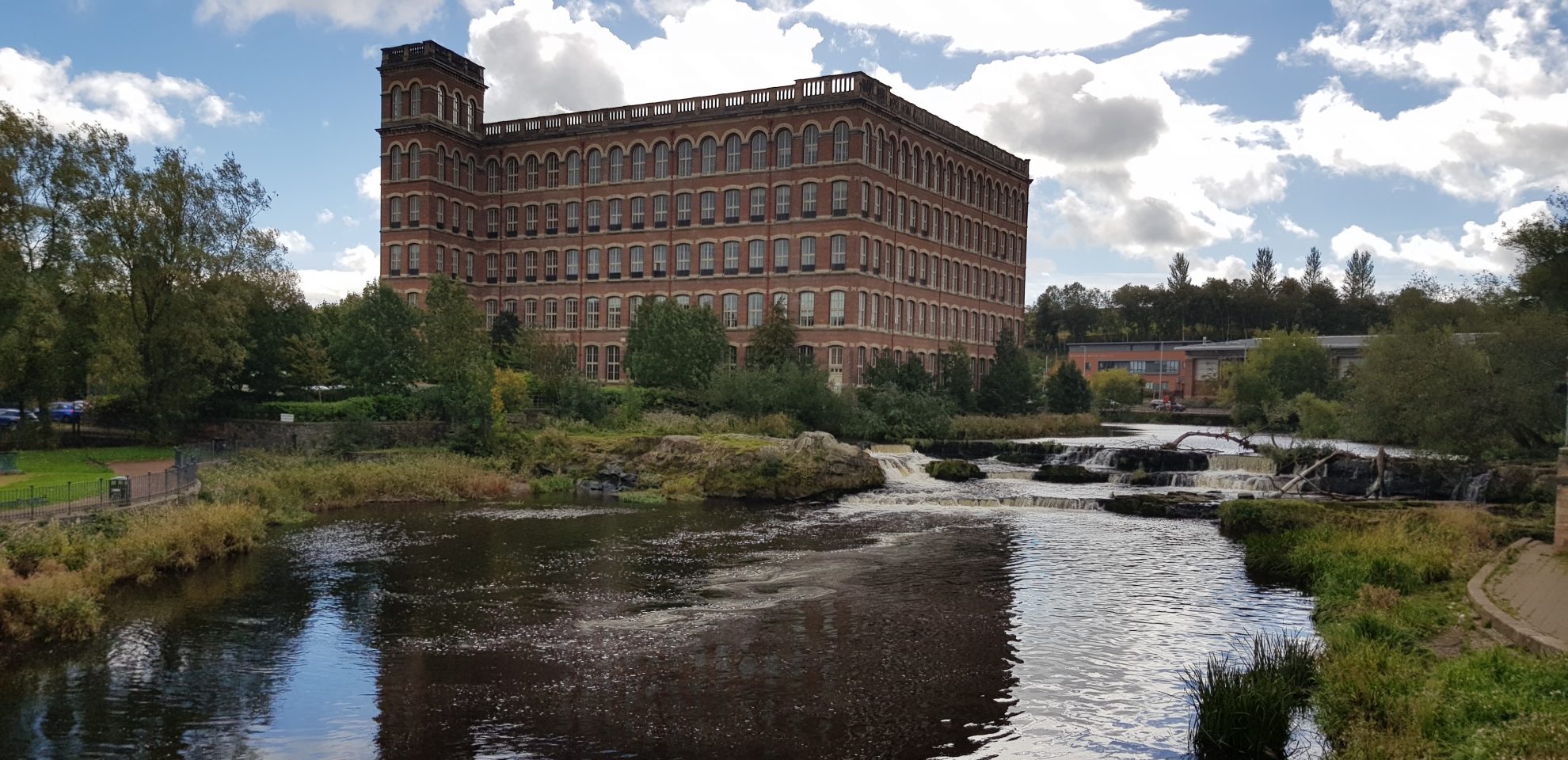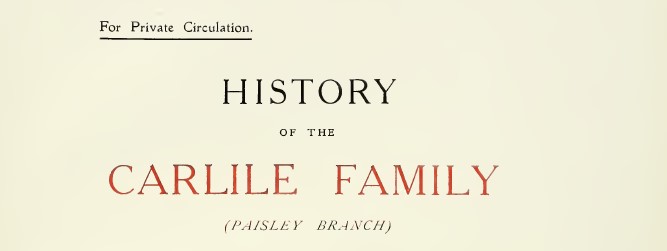Your basket is currently empty!
Over the last 8 to 10 years a lot of my research has focused on the introduction of fine Linen Thread production into Scotland by Christian Millar or Shaw of Bargarran at Erskine in 1722. Over the next 30 years Paisley had become home to many linen thread manufactures, all copying the techniques of Christian. One of the most influential of these copycats was John Carlile, the eldest son of James Carlyle of Annan.
John moved to Paisley during the mid to late 1730’s, with the one intention to enter the linen thread industry. There is sufficient evidence to show that the success of Christian Millar’s Bargarran Linen Thread Company had been heard of throughout Scotland, with some of her main clients being in Bath, well known for its lace making; where the friends of Lady Blantyre of Erskine House (who had a town house there) all said that the Bargarran thread was far superior to anything they could acquire from England.
So let us focus on John Carlile now. When John arrived in Paisley, he changed his surname from Carlyle to Carlile, forming the distinct Paisley branch of the family. As already said, he was the eldest son of James Carlyle of Annan and was born in Annan in 1703.
In the History of The Carlile Family (Paisley Branch) published in 1909 by some of its members for private circulation it states that John “is considered to have been the founder of the Paisley family, for he left Annan and settled in Paisley, where he built the first Scottish thread manufactory (1752), particularly for the manufacture of twisting and bleaching linen yarn.” In some ways this is not accurate; by the time John arrived in Paisley there were a growing number of linen thread manufacturers. What can be said though is that John was the first to build a large-scale manufactory in 1752 on the banks of the White Cart Water on New Sneddon Street. The Bankhead Mill as it was to become known grew over time, transitioning from linen to cotton in the first half of the 19th Century as the more well-known Clark and Coats families developed their fine cotton threads and yarns. John’s Mill survived into the late 19th Century when the business was purchased by the Clark family who incorporated it into Clark & Co, who continued to run the business as a going concern. I have seen an advert in the University of Glasgow Scottish Business Archives which states “Clark & Co: Seedhill, Bankhead & Cumberland Mills” showing their continued use of existing mills in addition to their own Seedhill Mill.
Roy’s Military survey of the lowlands of Scotland mapped 1752-55 shows Carlile Lane and Carlile Place already in existence and the red buildings along Carlile Lane probably relate to the earliest incarnation of the Bankhead Mill established by John.

Location of the Bankhead Mill: https://maps.nls.uk/geo/explore/#zoom=18.9&lat=55.85131&lon=-4.42297&layers=106&b=1
John was made a Free Burgess of Paisley in 1741, and married Janet, daughter of William Birkmyre, and became a Baillie of Paisley the following year. Janet was born in 1722 and died on 2 June 1803. John himself died on 11 October 1773, leaving five children surviving William Carlile of Paisley, James Carlile (the elder) of Paisley, Thomas Carlile of Houston, Edward Carlile of Hampstead and Mary Ferrier. John and Janet had seven children who all died at an early age: Margaret, 1744-5; Jean, 1748-9; Janet, 1749-55; John, 1754-5; George, 1756-7; Agnes, 1759-60; and Robert, 1761-2.
An interesting account of his home life has been preserved. We read that “The family religion consisted of worship twice each day, morning and evening, and on the Lord’s day thrice. After public worship at Church, it was …. his common practice to retire for prayer and meditation.”
“After this the family convened for supper, the refreshment taken at the interval between public worship being slight; then family worship. When that was concluded, the questions in the Assemblie’s Catechism were put by him. On next Sabbath the children were examined in Willison’s Catechism. After this he generally addressed his familie, by recommending their duty and danger from sin, or on such religious topics as occurred to him: then each of the children and servants was called on to read a chapter {sic) of the Bible. Commonly after this a religious book was read ; familie worship commenced again about 9 o’clock —and thus ended the familie exercises of the Sabbath”



You must be logged in to post a comment.